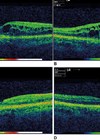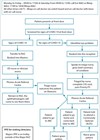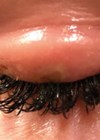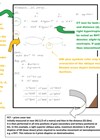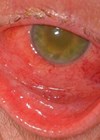Trainees
Keep calm and cut the carbon – improving sustainability in ophthalmology
As I dump my tenth pair of gloves into a non-recyclable clinical waste bin; dispose of another handful of plastic minims; or print another wad of single-sided discharge paperwork after a cataract surgery, the inconvenient truth of how these seemingly...
The fragile p-value
Abdus Samad Ansari explores the limitation of the p-value and the application of the fragility index in clinical trials. Clinical trials and tribulations? The restoration of vision or more purely the gift of sight is an aspect of care that...
‘Getting a head start’: ways medical students can boost their chances of entering ophthalmology training
Ophthalmology is one of the most competitive medical specialities in the UK, with 3.74 applicants per place in 2018 [1]. Given the competitive nature of this highly specialised field, medical students who are interested in pursuing a career in ophthalmology...
The paediatric cataract: an overview of the diagnosis and management
In this second article (see first article here), Samuel Aryee and Rhys Dumont Jones review the challenges involved in managing this condition. Examination and diagnosis Cataracts in children can appear in a variety of forms, each presenting in a different...
How the other half live – ophthalmology training around the world
Ophthalmology speciality training is currently seven years in the UK without an additional fellowship. UK trainees are privileged to have a training programme that is held in high esteem across the world, but did you ever wonder what other trainees...
Radiation retinopathy
The authors review the current treatment options for this condition. Radiation retinopathy (RR) occurs as a complication after exposure to any type of radiation (external beam, plaque brachytherapy and stereotactic radiosurgery) in the orbital or adnexal region. These include nasopharyngeal...
Optimising an acute eye service in the current COVID-19 crisis
With the current global pandemic of COVID-19 we have all had to redesign and reorganise our normal working practices. Non-urgent hospital work has been postponed to allow redistribution of resources, redeployment of hospital staff and to reduce the risk of...
Thermal injury and false eyelashes
The authors provide a case of cyanoacrylate glue causing a thermal burn on the eyelid and explain how this type of burn should be managed. The use of false lashes as well as the techniques used to apply them come...
The paediatric cataract: an overview of the embryology and pathophysiology
In the first of the two articles (see Part 2 here) on paediatric cataracts, Samuel Aryee reviews the aetiology of this condition. Cataracts arise from opacification of the natural transparent lens, which can cause partial or total blindness. Although the...
The orthoptic report – what does it all mean?
An orthoptist report may well look like a piece of Japanese Shodo, however, it does in fact contain some extremely useful information. This piece will briefly explain some of the common brush strokes seen on a report. There is some...
Understanding and confronting bacterial endophthalmitis
Abdus Samad Ansari highlights the importance of early recognition of this condition using an unusual presentation. Endophthalmitis is a medical emergency with devastating consequences. Despite adequate treatment, severe cases frequently result in permanent blindness. Endophthalmitis involves inflammation of both the...
An interview with Professor John Forrester
What made you choose ophthalmology as a career and how did your interest in academia develop? During Medical School at Glasgow University, I was getting progressively disillusioned with the career options while my colleagues and friends all seemed to quickly...







